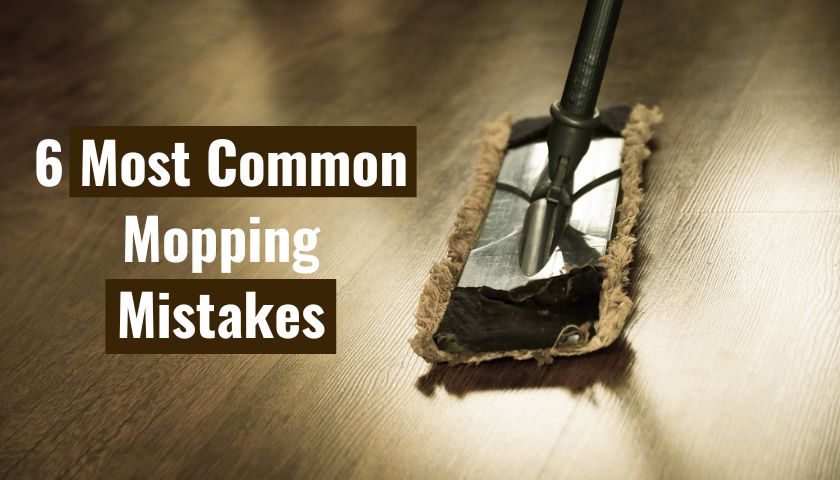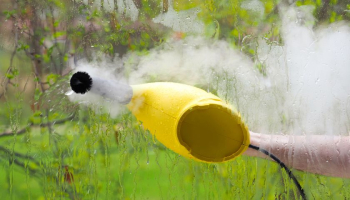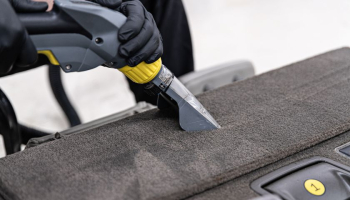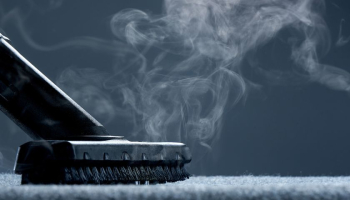6 Most Common Mopping Mistakes | Things To Avoid

The right mopping techniques and routines can go a long way toward keeping your floor clean and healthy. But plenty of mopping mistakes can make your cleaning job harder instead of easier. So what are the most common mopping mistakes?
Fortunately, I have covered this post with some general principles for successful mopping and a few handy tips for avoiding the most common pitfalls.
Let’s take a look at some of the most common mopping mistakes you might be making and how you can avoid them in the future.
Contents
6 Most Common Mopping Mistakes
Moping is a surprisingly complicated task. The process can be conquered with so many different types of mop buckets, wringer mechanisms, and microfibre pads to choose from. And when you further consider all the subtle differences between one mop head vs. another, things start to get a little crazy!
In order to avoid inadvertently doing more harm than good when using a mop, there are certain things to watch out for. Mopping is one of those cleaning tasks that can be finicky. If you’re not careful, mopping can be counter-productive in your efforts to create a cleaner home.
These are some of the most everyday mistakes people often make when mopping and how to avoid them:
1. Not vacuuming before mopping
It is common for people to not vacuum before mopping the floor, one of the most common mistakes they make.
Vacuuming before mopping will help to pick up any dust, dirt, and pet hair that may be on your floor. This will make for a much cleaner mop job and will help your floors stay cleaner for longer.
This can lead to streaks and smears on your floor, as well as leaving dirt and dust behind. If you want to eliminate these problems, be sure to vacuum your floor before you start mopping.
2. Wringing out too much liquid
Cotton mop heads don’t usually hold a lot of dirty water, which is great. But if you wring out your cotton mop head too much, you might end up squeezing too much liquid out of your mop.
When you wring out your mop, you should squeeze out just enough water to make the cleaning solution come out clear.
3. Not changing dirty mop water
Mops are an essential cleaning tool, but if they aren’t properly cared for, they can harbor bacteria and dirt. One of the most important things you can do to keep your mop clean is to change the water frequently.
If you don’t change the water often, the dirt and debris transfer back to the floor. This can lead to the streak of the floor and even the spread of illness-causing bacteria.
For these reasons, it is important to change the water in your mop bucket often, preferably when the moping water seems dirty. This will assist to maintain your floors clean and free of bacteria.
4. Using too much detergent
Excessive detergent can leave your floors sticky, streaky, and with a strong chemical smell. It can also result in a buildup of scum and grime in your bucket, making the cleaning process more challenging over time.
To avoid this, don’t just squirt your mop head full of detergent and expect it to work properly. Instead, you should use a measuring spoon to measure how much cleaning solution you need per cleaning cycle.
5. Using the wrong kind of detergent
Choosing the right type of cleaning solution is essential if you want your mopping routine to be effective and efficient. Different cleaning agents are designed for different purposes, and some are better suited to mopping than others.
For example, while Dr. Bronner’s is a great multi-purpose cleaning agent, it’s not really suitable for mopping. You can also try different ingredients to create your own DIY cleaning solution.
Vinegar, essential oil, and water solution are incredible. It is great for deodorizing and will leave your floors with a fresh, crisp scent.
6. Mop storage mistakes
Mop heads and microfiber pads are pretty delicate. They can easily become stained and soiled if you don’t care for them properly. If you just throw your dirty mop pads into a bucket or drawer, you risk staining and weakening the fabric of the pad. Mop heads should be laundered after every use.
This will help keep them clean and fresh between uses and will extend their lifespan. You can either throw them in the washing machine or hand-wash them with a little bit of soap and water.
Mop buckets should also be kept clean and free of scum and grime. You can do this by adding a cleaning solution to the bucket after each use and allowing it to sit there and break down over time.
Which type of mop should you use?
Microfiber pads are the key to a successful mopping routine. They’re the thing that does most of the actual cleaning work, so choosing the right ones is essential.
There are a ton of different mop types out there, and each one has its own strengths and weaknesses. A push or pull-behind mop is the most common type of mop and is designed to be used in conjunction with a bucket and wringer.
If you have a tile or hardwood floor and would like to use a cleaning solution that doesn’t involve water, you should go with a microfiber mop.
Sponge mops are great for cleaning low-pile carpets, but for all-purpose cleaning, you should stick with microfibre mops. Mop types also vary in terms of size and shape.
Cotton mop heads are usually recommended for cleaning laminate and hardwood floors. They are soft and gentle but also efficient for picking up dirt, dust, and grime. However, when selecting your microfiber pads, you have a few options.
1. Standard
Standard pads are good for general cleaning and are designed to pick up dust, dirt, and grime. They are also great for cleaning light-colored wood and tile floors.
Standard pads can be a little aggressive, so they may not be ideal for wiping off light-colored vinyl flooring or cleaning delicate materials like blinds or window frames.
2. Light-duty
Light-duty pads are a little softer than standard microfiber mop pads and are a little better at cleaning delicate materials. They are also better at cleaning light-colored vinyl floors.
They are not as good at picking up dust, dirt, or grime, however, so they might not be the best cleaning solution for hardwood and tile floors.
Frequently Asked Questions (FAQs)
Can you mop with just water?
For cleaning the floor, you can use just water. It can remove dirt and debris from the floor. Try to use warm water to kill bacteria on the floor. However, if you have a non-laminated hardwood floor, then do not use water.
How many times should you change the mop water?
It depends on how much dirty your floor is. When you can see muddy-type mop water, you should change the water and get clean water to continue.
Why is the floor not clean after mopping?
Your floor may still be dirty due to soap and dirt residue and streaks. This is because you may not change the mopping water or do not wash the mop head properly.
Should I use hot water for mopping?
You should not use too hot water for mopping. Warm water at 59 degrees will be okay for mopping. It will make the floor clean and hygienic.
How to dry the floor quickly after mopping?
After mopping, drying the floor is important. So you can open doors and windows and turn on the fan to dry the floor faster. Proper air circulation let the floor dry faster.
Summing up
Everyone makes mistakes when mopping. You should avoid these common mistakes while cleaning floors. The best way to avoid these is to be prepared: know what type of floor you’re cleaning, choose the right cleaning solution, use the right mop type, and use the right amount of detergent.
The benefits of regular mopping will become apparent as soon as you get into the rhythm of it. In addition to looking great, a clean floor is easier to maintain, less likely to damage, and can reduce allergens in the air. Ready to get started?
Make sure you avoid these mistakes, follow our tips and tricks, and you’ll be mopping like a pro in no time.






![How to Attach a Swiffer Wet Pad? [Learn to Do It Correctly]](https://mopsreview.com/wp-content/uploads/thumbs_dir/How-to-Attach-Swiffer-Wet-Pad-20ohih1eaj9c1n0speeheg51u8ulaobz5p513g7q9y90.jpg)

